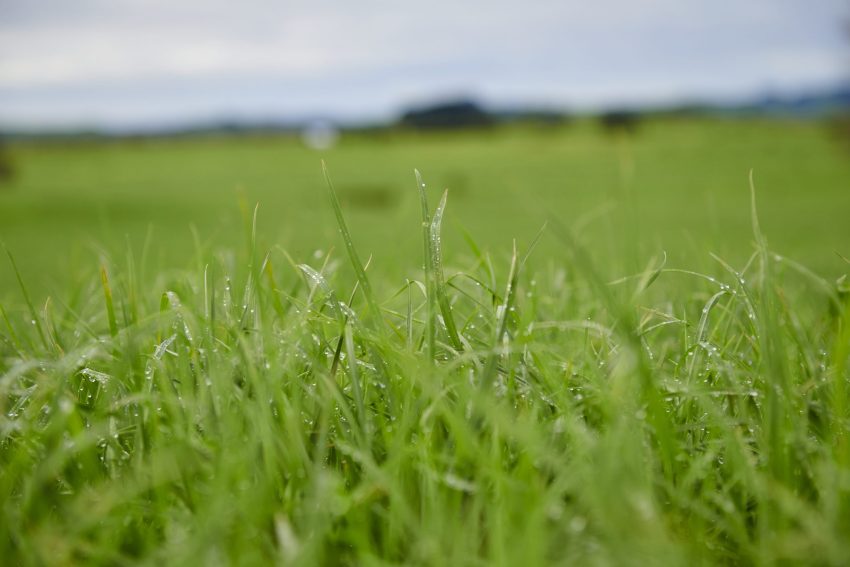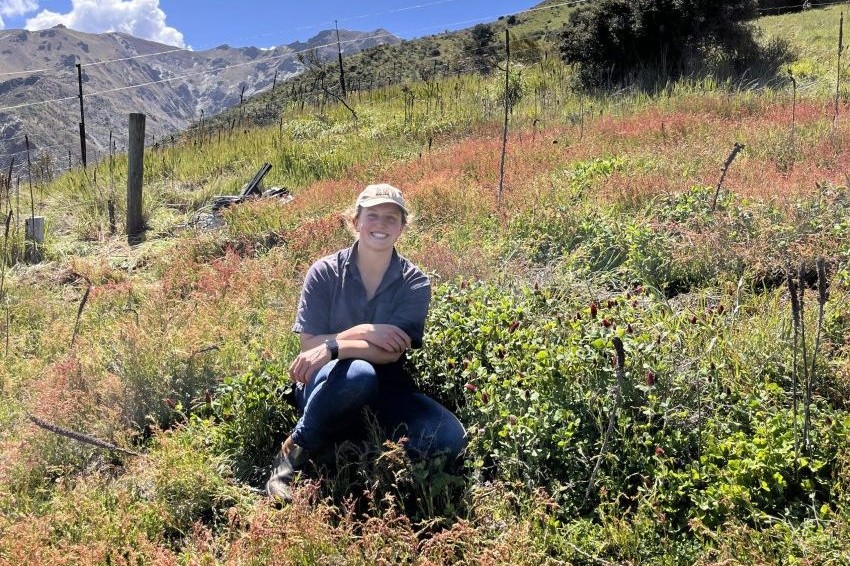Profit from pasture renewal
Kerry Dwyer says each farmer should renew the area suited to their farm.

A big part of improving lamb growth rates is having good pastures in front of your stock. A scan on the internet of research and marketing shows no more that 5% of pastures are renewed annually in NZ, meaning the average pasture life is about 20 years.
We know:
- Pasture production declines with age, as measured drymatter production at year nine is about 35% less than at year two after establishment.
- The difference in DM production between the best and worst-producing paddocks on most farms is 35% or more.
- About 10% of sown ryegrass remains in most pastures by year 10 after establishment.
Research states pasture decline is due to the interactions of sward age, grazing management (or lack of it), sub-optimal fertiliser applications, and weed invasions.
We know:
- New pastures have higher DM production.
- New pastures have higher energy value, by 0.5 – 0.9MJME/kg DM.
- New pastures have better utilisation by grazing stock. And we know new pastures produce more on the shoulders of the growing season.
Why do farmer’s renew pastures? One source states five main reasons:
- It is a result of fodder crop rotations
- A habit to have it in the budget and management system
- A response to a major event such as drought or flood
- A part of major farm development plan
- A result of targeted cost/benefit analysis to achieve gains.
How does your pasture renewal programme fit into the above list? It may be fitting one or several of these reasons with equal validity.
Considerable research has been done over the years concerning pasture renewal, production and persistence. NZ prides itself on leading the world in pastoral production. Check out the many Grasslands Association publications for some great bedtime reading.
There are various ways to renew pastures, with varying costs and results. Our farm’s pasture renewal system is to spray in December, give a summer fallow and direct drill late February. When I look at our last year’s accounts I get the following cost figures in Table 1.
The biggest non-cash cost is lost pasture growth. In our situation we lose three months’ summer pasture growth, on average that is worth about 3000kg DM/ha, to replace that with balage might cost over $1000/ha.
Looking at other farmers’ figures I see similar costs for the various methods of new pasture establishment, whether it be full cultivation via fodder crops or direct drilling. You may get a cheaper result with one spray and direct drill, but to get a good result it unfortunately costs.
Some years I have had to apply slug bait and maybe an insecticide spray, increasing the cost. We sow 20kg/ha total seed so the average cost shown is over $13/kg. You can get cheaper seed, but are you sowing more of it? And is it treated?
Growing a fodder crop in the rotation helps spread the cost to some extent, but all the figures I see still come towards $1000/ha. That’s for the pasture renewal if the job is done without many shortcuts.
Note that if you are growing fodder crop, as part of the pasture renewal plan it may be difficult to get a higher rate of new pasture because you are doubling the area out of permanent pasture.
Is the plan to grow a fodder crop or to get new pasture? Where does the compromise comfortably sit?
An interesting aside concerning sowing rate is research has consistently found higher sowing rates of pasture seed do not have much effect on the emergence and survival of weeds.
Sowing at 30kg/ha of grass seed does not limit weed growth any better than 20kg/ha, or 15kg/ha. Timing of sowing, along with grazing management and herbicide application post emergence are the main factors in weed control in new pastures, both short and longer term.
The dollar rewards
Next question, what is the dollar benefit of renewing your pastures? Scanning the literature, I read the net annual benefit of doing the job is more than $1000/ha in the first year, these figures are from independent research as well as seed-selling firms. That is profit over and above costs.
The payback is within two years for every hectare pasture renewed. When you spread that over the whole farm area it can be a substantial figure.
The norm on NZ farms is about 5% new pasture per year. If you double that to 10% the research shows a benefit over the whole farm of over $200/ha additional profit for sheep and beef farms and slightly more for dairy farms.
The research says having extra, new pasture has a compounding effect. If you renew 5% (15ha on a 300ha sheep and beef farm) a year you will benefit by about $15,000 a year. If you renew 10% (30ha) you will benefit by $60,000 a year.
Benefit equals additional profit, after cost. The compounding effect is because you have pastures lasting 20 years if renewing 5% a year, meaning they have 10 years in the low production category. If you renew 10% a year they last 10 years maximum before renewal, so the whole farm production level increases.

The maths on the whole operation looks very good to me, so we aim to get about 10% of the cultivable area into new pasture each autumn. We aim for a pasture with some persistence, and put some capital fert and lime on as part of the renovation process.
There can be other costs to pasture renewal. Does your area need drainage? Levelling? Substantial lime and fertiliser inputs?
Don’t forget about improving stock water and subdivision if needed because to get the best out of new pastures you need to have good grazing management. These may all add to the cost but are part of a development plan rather than attributable to renewing pastures per se.
The biggest non-cash cost is lost pasture growth. In our situation we lose three months’ summer pasture growth, on average that is worth about 3000kg DM/ha, to replace that with balage might cost over $1000/ha.
Growing a fodder crop can offset this cost to some extent by shifting a feed surplus to a likely feed deficit period. We are not set up to use 10% of our farm area as fodder crop. Growing successive fodder crops (ie: two years then back to pasture) would mean only 5% new pasture area; and in summer dry area we need the fallow time as well as being more conservatively stocked over that time. Our practice suits our system to get a good area of new pasture each year, what suits yours?





